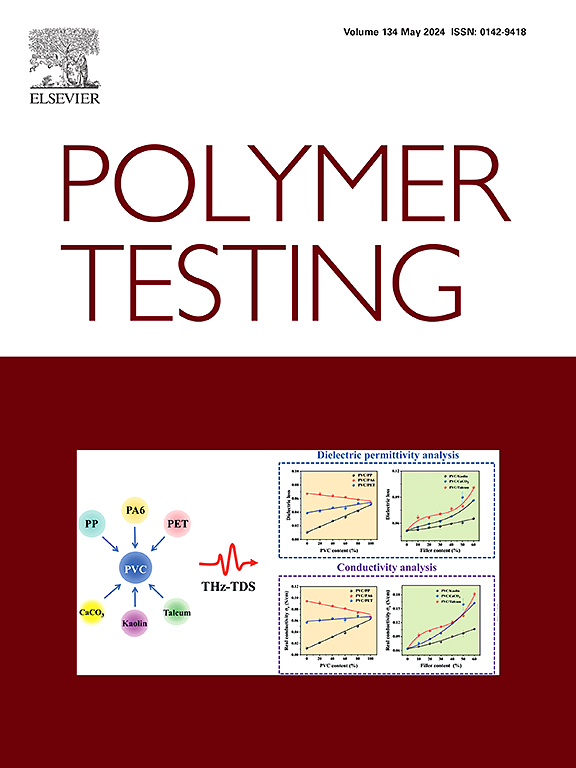Molecular origin of asymmetric yield surface of crosslinked epoxy polymers
IF 5
2区 材料科学
Q1 MATERIALS SCIENCE, CHARACTERIZATION & TESTING
引用次数: 0
Abstract
In this study, we investigate the multiaxial mechanical behavior of thermosetting epoxy polymers and explore the asymmetry between tension and compression in their yield surfaces at the molecular level using molecular dynamics simulations, complemented by experimental validation through polymer synthesis. After constructing an atomistic-scale amorphous epoxy system based on molecular dynamics simulations, we derived equivalent stress–strain curves and yield surfaces as functions of the degree of crosslinking through biaxial deformation analysis. The results show that increasing the degree of crosslinking leads to an increase in equivalent stress in all loading directions, resulting in an expansion of the yield surface. Notably, a more accelerated expansion of the yield surface in the biaxial compression direction was observed at higher degrees of crosslinking, which is attributed to a deformation mechanism that more effectively accommodates stress in this loading direction. This unique deformation behavior is attributed to high non-bonded stress arising from reduced polymer chain mobility by crosslinking effect. To experimentally validate the deformation mechanisms, epoxy polymer samples were synthesized, and uniaxial tensile and plane-strain compression (PSC) tests were conducted to obtain stress–strain profiles and yield surfaces according to different degrees of cure. These results provide fundamental insights into the distinct mechanical properties of polymer materials, such as the asymmetry of the yield surface, by revealing their behavior at the molecular level.
求助全文
约1分钟内获得全文
求助全文
来源期刊

Polymer Testing
工程技术-材料科学:表征与测试
CiteScore
10.70
自引率
5.90%
发文量
328
审稿时长
44 days
期刊介绍:
Polymer Testing focuses on the testing, analysis and characterization of polymer materials, including both synthetic and natural or biobased polymers. Novel testing methods and the testing of novel polymeric materials in bulk, solution and dispersion is covered. In addition, we welcome the submission of the testing of polymeric materials for a wide range of applications and industrial products as well as nanoscale characterization.
The scope includes but is not limited to the following main topics:
Novel testing methods and Chemical analysis
• mechanical, thermal, electrical, chemical, imaging, spectroscopy, scattering and rheology
Physical properties and behaviour of novel polymer systems
• nanoscale properties, morphology, transport properties
Degradation and recycling of polymeric materials when combined with novel testing or characterization methods
• degradation, biodegradation, ageing and fire retardancy
Modelling and Simulation work will be only considered when it is linked to new or previously published experimental results.
 求助内容:
求助内容: 应助结果提醒方式:
应助结果提醒方式:


